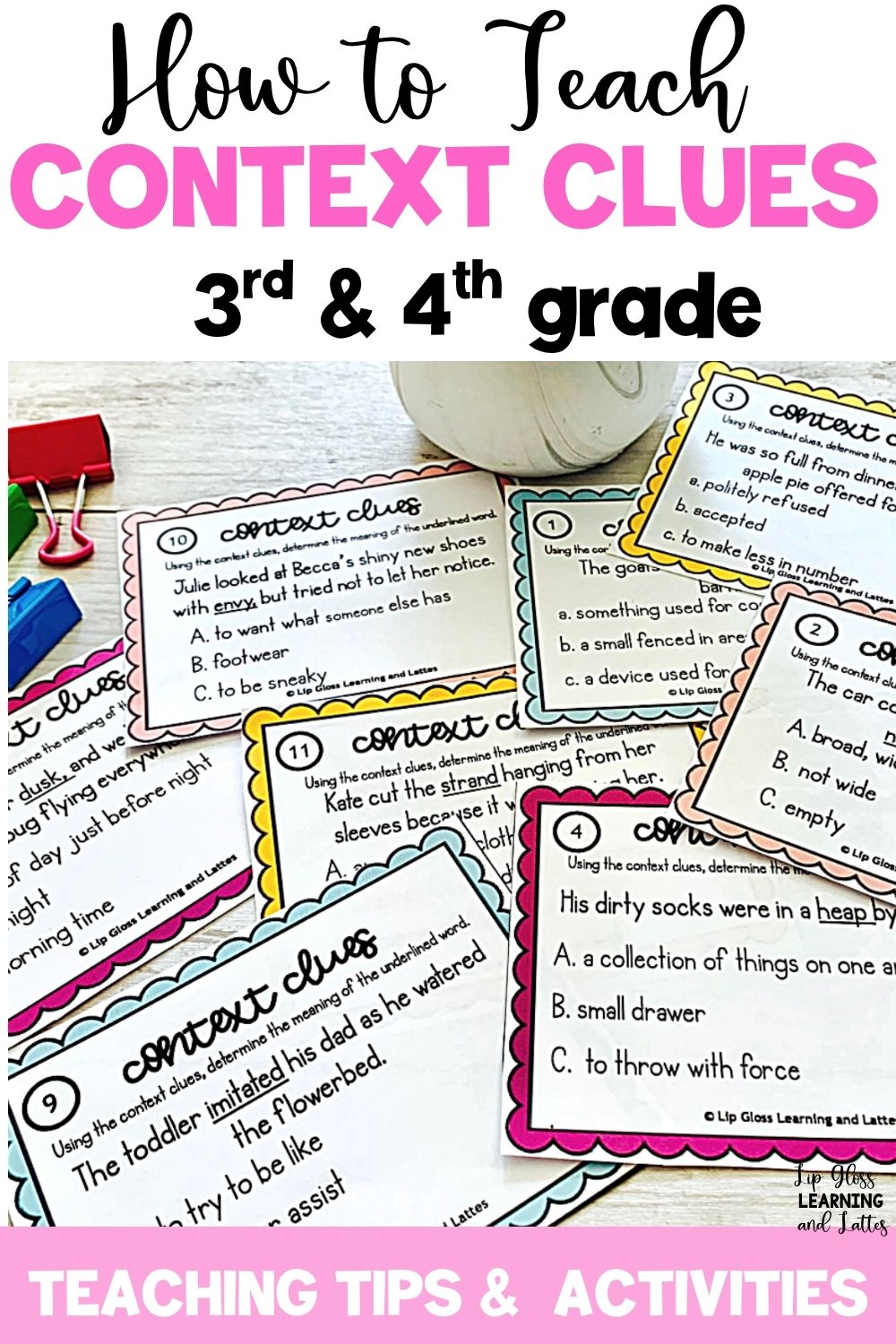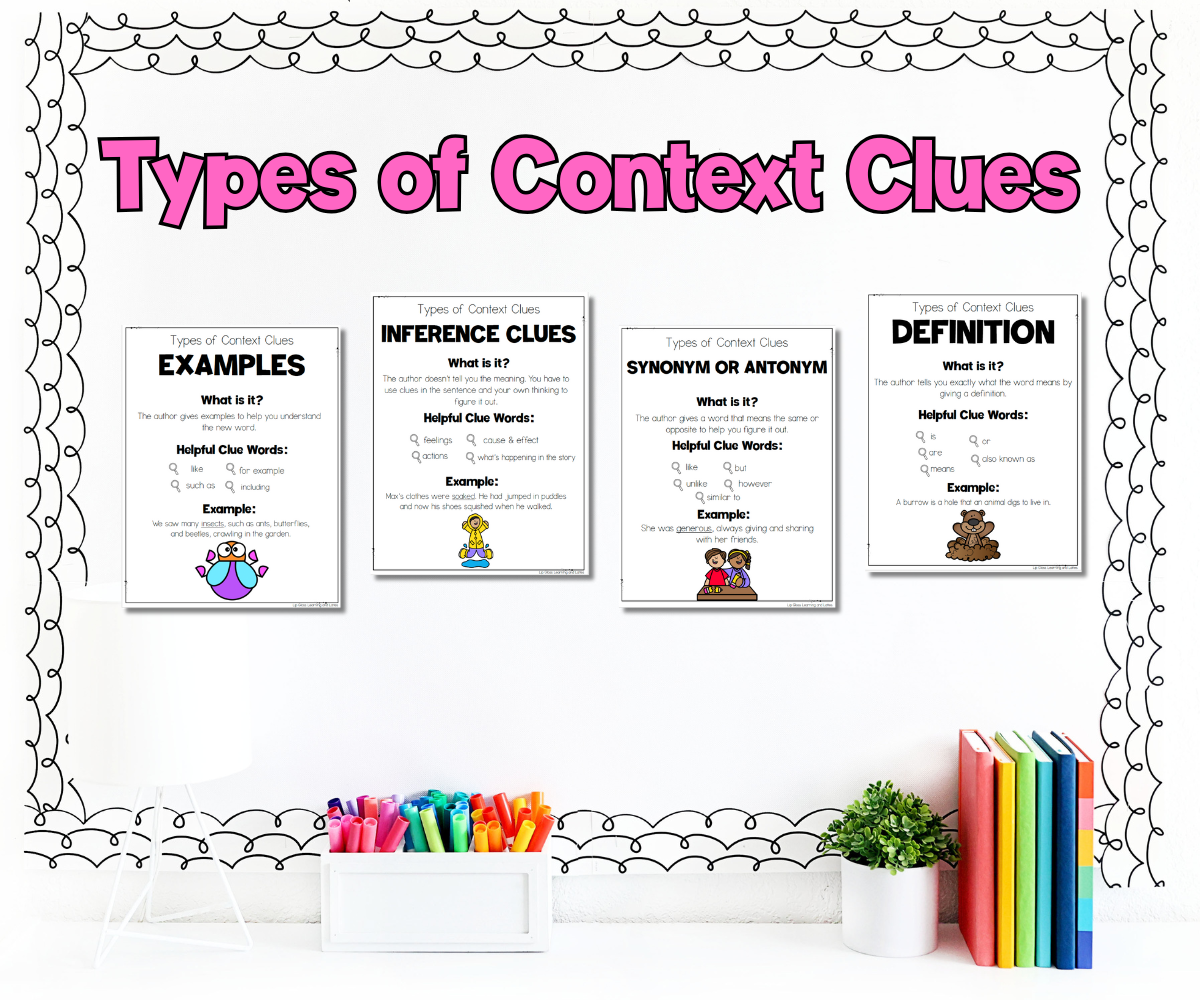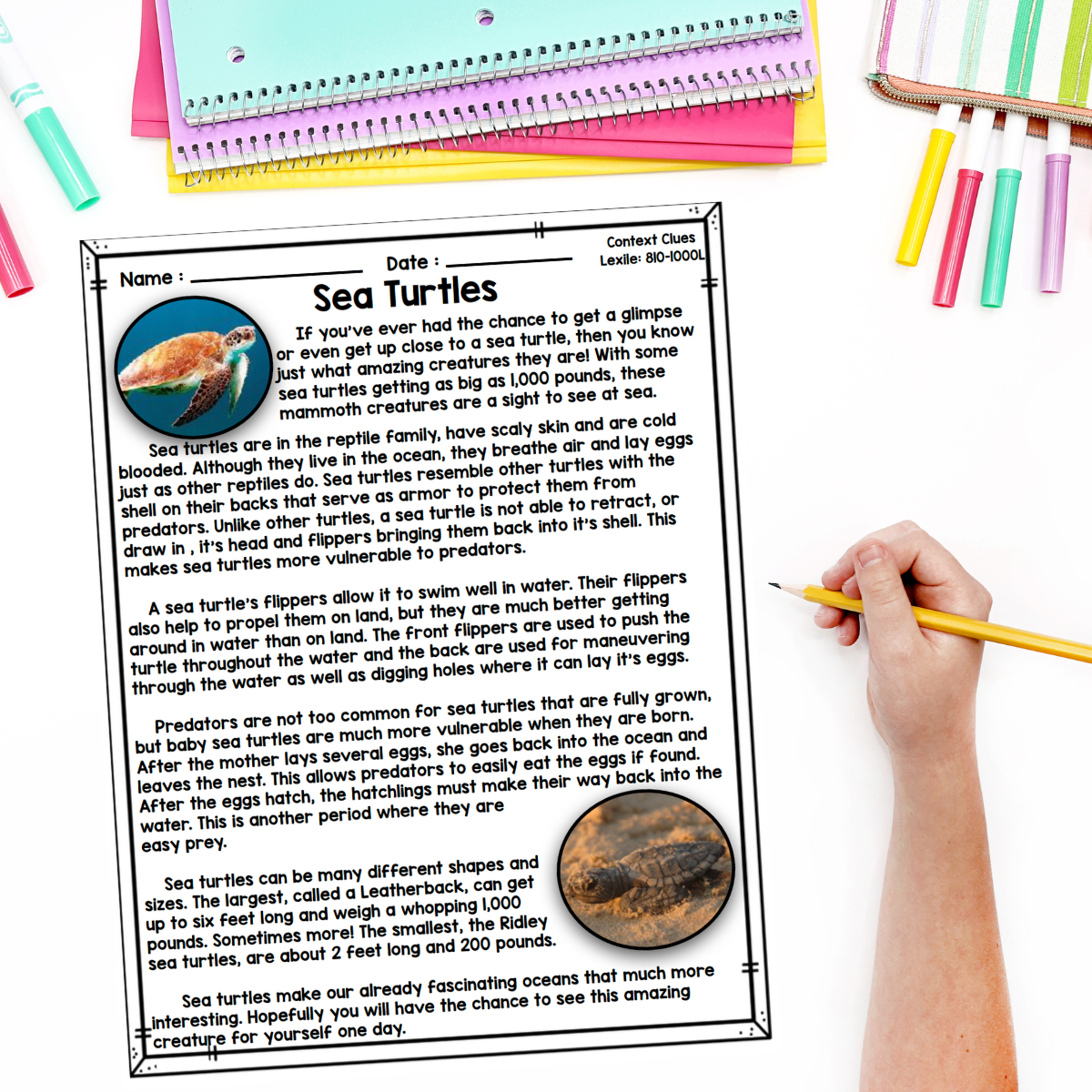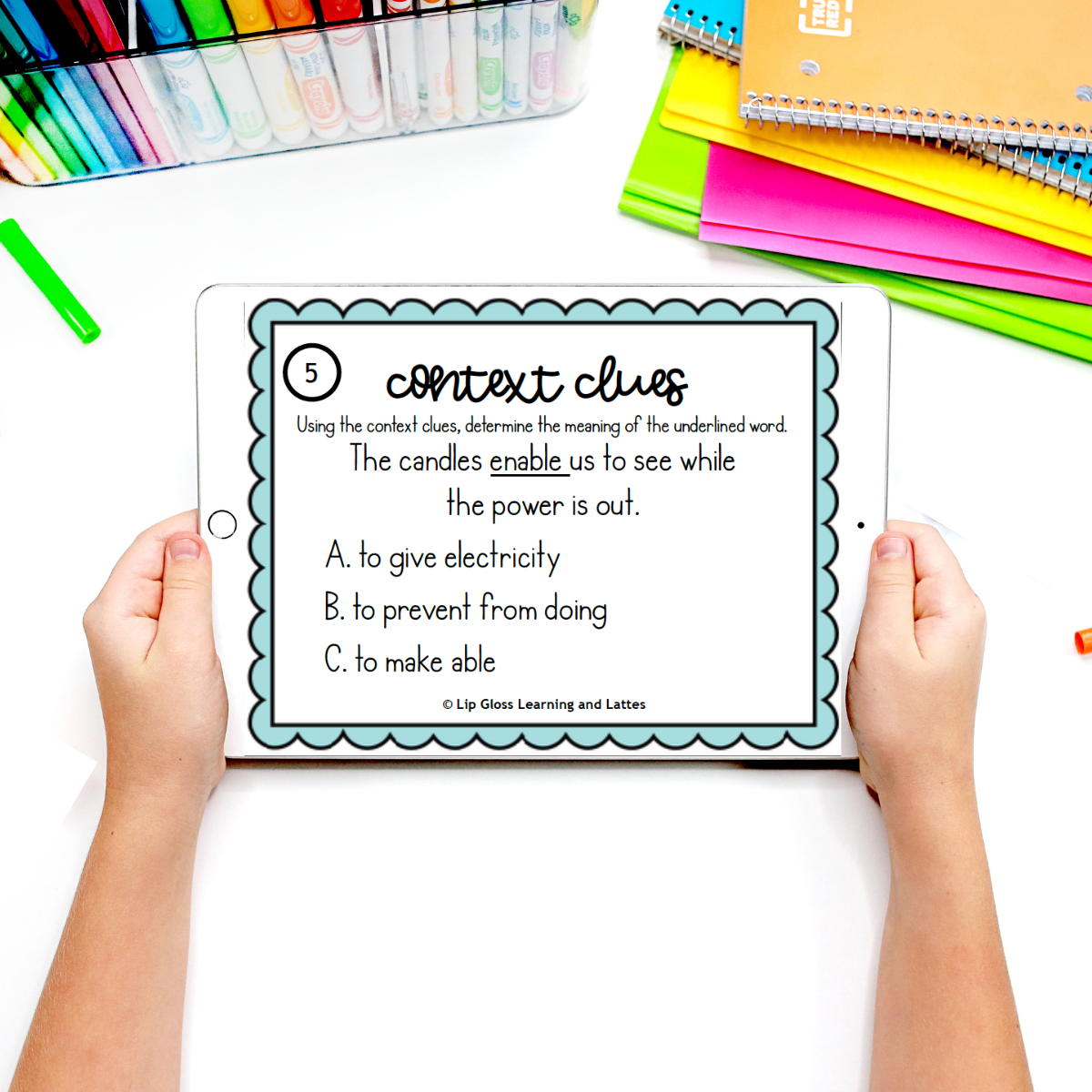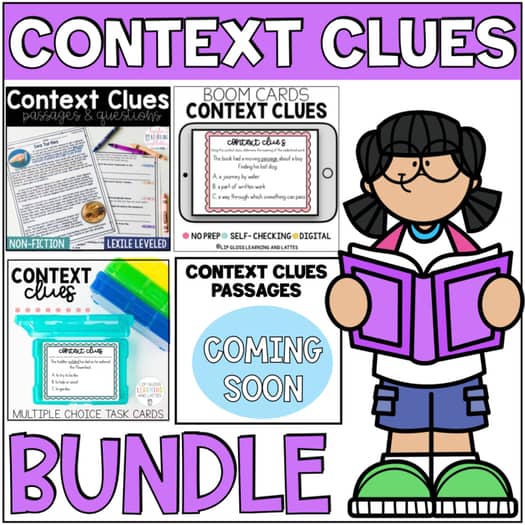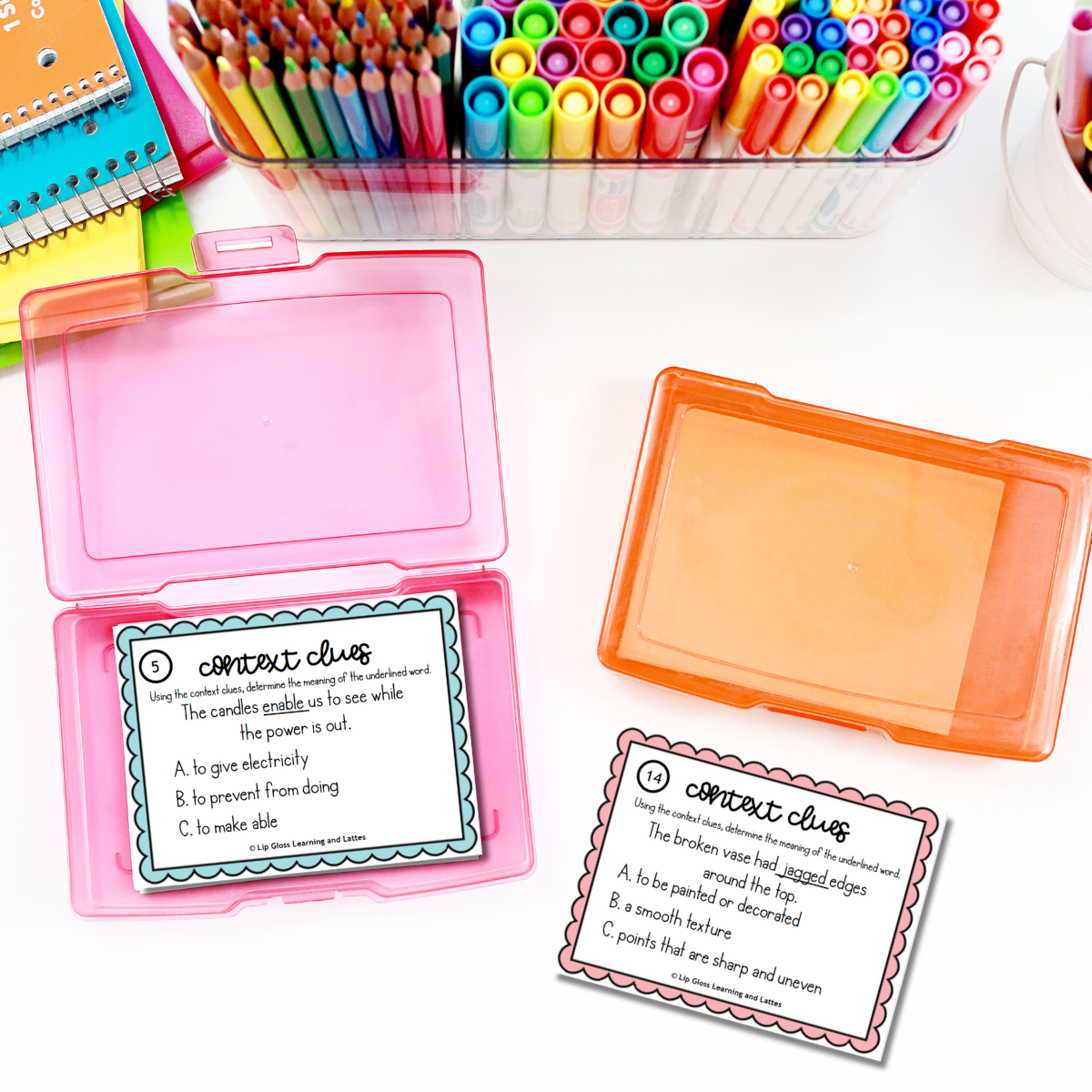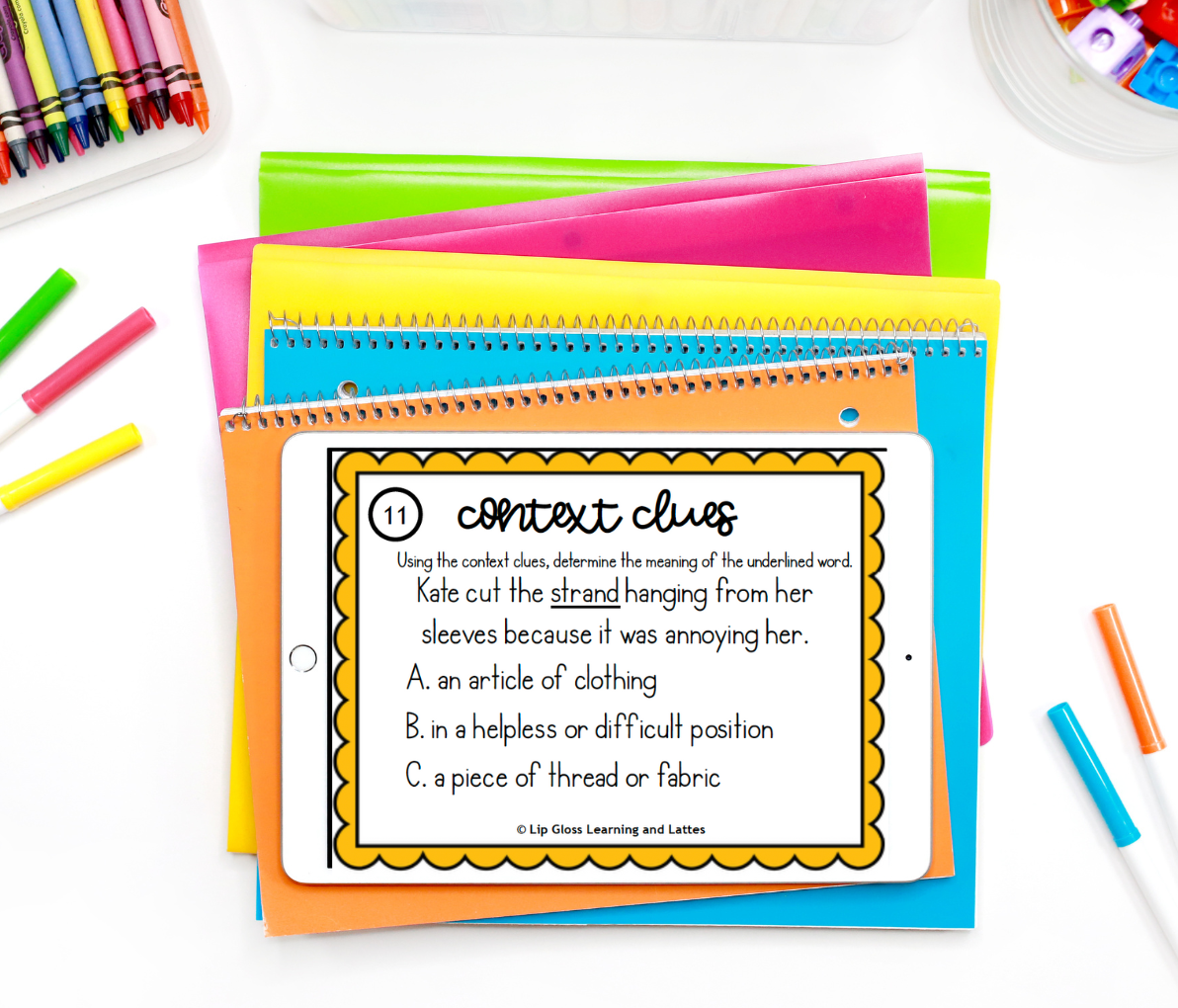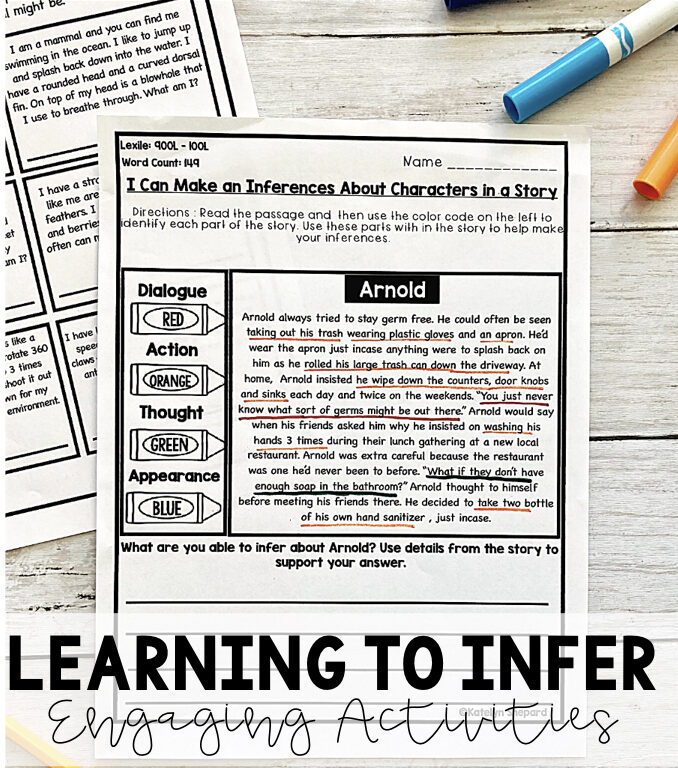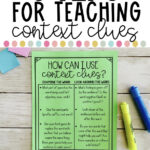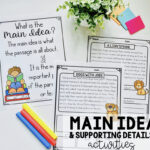How to Teach Context Clues
Teaching context clues used to feel like a game of luck in my classroom.
My students would come across an unfamiliar word, and—without fail—they’d either guess wildly or skip it entirely.
Sound familiar?
If you’ve ever wished your students had more confidence when encountering new words, you’re not alone. Context clues are one of those essential reading skills that impact everything—vocabulary, comprehension, and even test performance. But practicing them? That can get repetitive fast.
Over time, I’ve found a few strategies that actually work—and make teaching context clues more meaningful (and less boring) for everyone.
5 Strategies for Teaching Context Clues
1. Teach the Types of Context Clues with Anchor Charts
Before students can use clues, they need to recognize what kinds of clues they’re looking for. Create or display anchor charts that explain:
-
Definition clues
-
Synonym or antonym clues
-
Inference clues
-
Example cclues
Keep these up while you teach context clues for easy reference, and model how to spot each one during read-alouds.
Grab these anchor charts for free here!
2. Model “Think-Alouds” with Real Text
Grab a short paragraph (from a read-aloud or even a subject-area text) and model your thinking as you figure out an unfamiliar word.
“Hmm… I don’t know this word ‘retract’—but the sentence says, ‘A sea turtle is not able to retract, or draw in, it’s head and flippers bringing them back into it’s shell.’ That description sounds to me like retract means to pull in.”
This shows students how to slow down and use logic instead of guessing or skipping.
3. Act It Out!
Choose sentences with bolded words and have students act out what they think the word means using clues from the sentence. Acting out the word helps kinesthetic learners build deeper understanding—and it makes learning super fun!
Example:
She tiptoed across the room so she wouldn’t wake the baby.
Ask: “What does tiptoed mean? Can you show me?”
Let students act out the word, then explain what clues helped them figure it out.
4. Use Short, Daily Practice That Builds Over Time
Instead of doing one long worksheet, give students 3–5 focused sentences each day where they use context to determine word meaning. Repetition in small doses builds confidence and long-term retention.
You can also use digital versions like Boom Cards or quick task cards to make this routine more engaging.
5. Encourage Students to Write Their Own Context Clues Sentences
Once students understand how to read context clues, challenge them to create them! Give them a list of vocabulary words and have them write their own sentences with strong context.
Bonus: Have students try to define each other’s words using only the sentence as a clue.
Want resources to get students to master context clues?
If you’re looking for resources that align with the strategies I mentioned above—color coding, modeling, task cards, and even digital tools—I created a bundle with my best-selling context clues activities all into one resource.
Here’s a peek at what’s inside my Context Clues Reading Bundle:
Context Clues Task Cards
These multiple choice cards help students choose the correct meaning of the underlined word based on clues in the sentence. They are ideal for whole group reading warm-ups, reading centers, or independent practice. Students can easily complete them with partners as well.
You’ll love all the practice they’ll get using context clues from the sentences on each card to determine the best meaning for the underlined word.
- Includes 40 task cards + answer key
- Use for early finishers, morning work, or review
Nonfiction Context Clues Passages
Lexile-leveled passages with high-interest topics that challenge readers to use text evidence and color-coding strategies to identify word meaning.
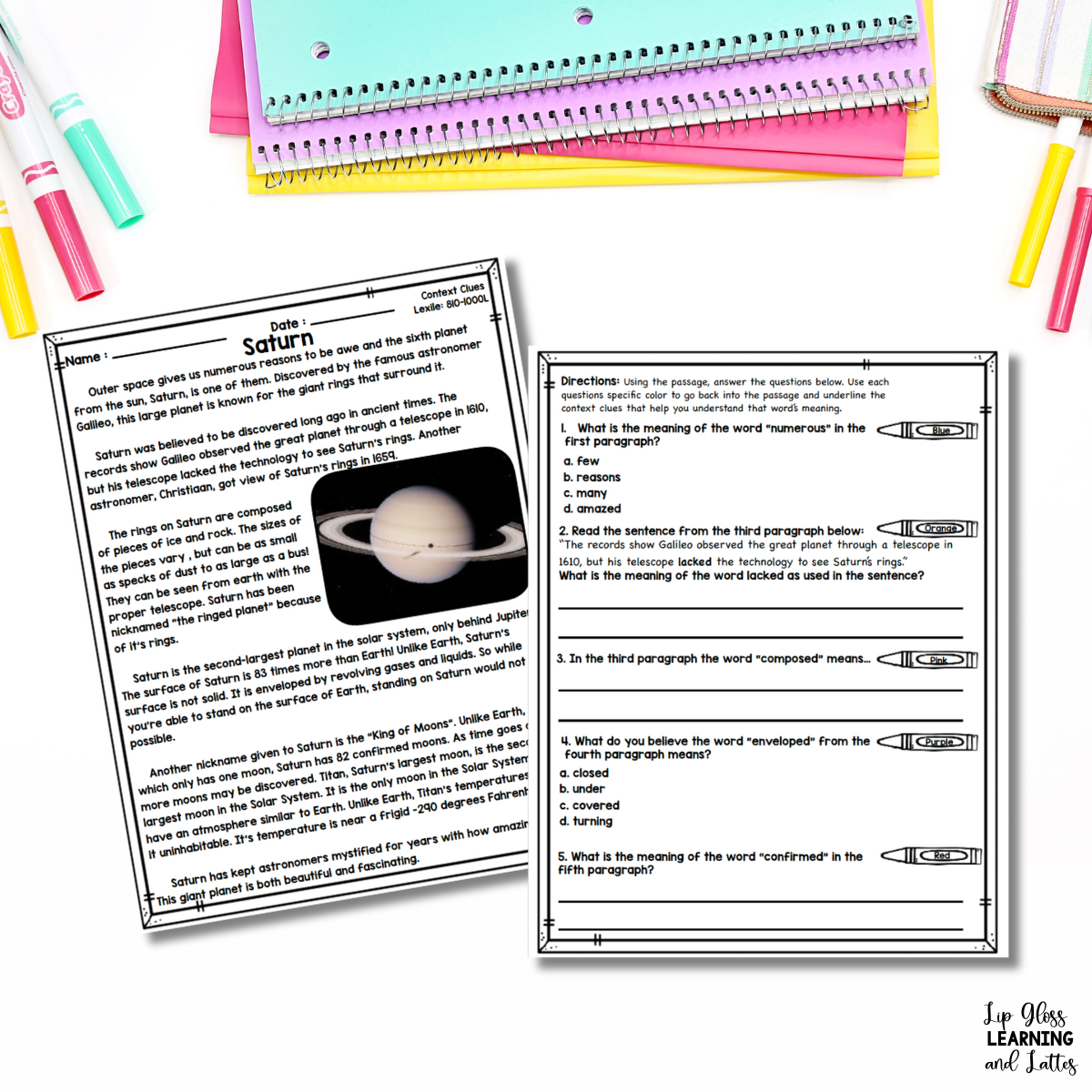
- Includes multiple choice + short response questions
- Color-coded key included
- Great for 4th–5th grade or advanced 3rd graders
Boom Cards for Context Clues
These digital, self-checking cards are great for centers, homework, or tech days. Students read each sentence and choose the meaning of the underlined word with immediate feedback.
- 40 slides
- No prep—just assign and go!
Ready to Make Context Clues Click for Your Class?
If you want to simplify your planning and give your students meaningful, varied practice with this essential skill, check out the full Context Clues Bundle below.
Click Here to Check Out the Bundle!
Have students mastered context clues now and you’re ready to teach inference?
Once your students have a solid grasp on using context clues, teaching them how to make inferences is a natural next step. Both skills require students to use evidence from the text and their thinking — they just apply it in different ways. If you’re ready to move into inferencing, check out my post on How to Teach Students to Make Inferences.


